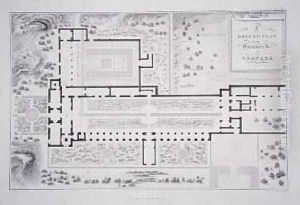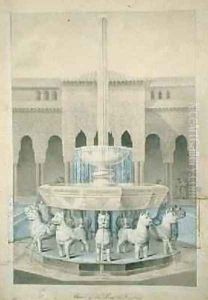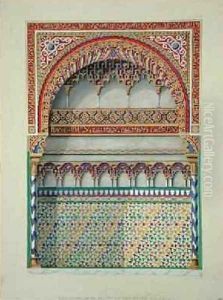Murphy, James Cavanagh Paintings
James Cavanagh Murphy, born in 1760 in Cork, Ireland, was an architect and antiquary whose work was pivotal in documenting the architectural history of Portugal and Spain. Despite his relatively short life, dying in 1814, Murphy made significant contributions to the understanding of Iberian architecture, particularly through his detailed studies of Islamic architectural heritage in the region.
Murphy initially trained as an architect in Dublin, Ireland, where his talents quickly became evident. However, it was his travels to Portugal in 1788 that marked the beginning of his most influential work. He embarked on this journey with the intention of studying and recording the ancient architecture of Portugal, but what captured his attention most was the splendor of Islamic architecture, especially the Great Mosque of Córdoba in Spain.
His most notable work, 'The Arabian Antiquities of Spain', published in 1815 posthumously, was a monumental achievement that offered European audiences their first detailed look at the Islamic architectural wonders of the Iberian Peninsula. This work, based on years of meticulous drawing and research, highlighted the intricate beauty of Moorish architecture and played a crucial role in sparking European interest in the Islamic architectural heritage.
Murphy's dedication to his work was not just an academic pursuit; it was also driven by a deep appreciation for the artistry and sophistication of the cultures he studied. His drawings and writings helped preserve knowledge of Islamic architecture at a time when many of these buildings were at risk of neglect or destruction. Despite facing numerous challenges, including financial difficulties and the physical hardships of his travels, Murphy's passion for architecture and history never waned.
James Cavanagh Murphy's legacy extends beyond his contributions to architectural history. He is remembered as a pioneering figure in the study of Islamic architecture in Europe, whose work laid the foundation for future generations of historians and architects. His meticulous documentation and profound appreciation for the cultures he studied have left an indelible mark on the fields of art history and architecture. Murphy's life and work exemplify the impact that dedicated scholarship can have on preserving and understanding the architectural treasures of our world.


